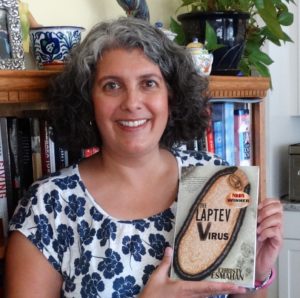“What do you mean?” I asked my friend, genuinely surprised.
“I’ve been watching people eat corn on the cob all my life,” he said, (which is really not that surprising if you consider that we were in Ohio, where there are many, many corn fields. In Columbus there is even a huge monument to corn, which consists of 6 foot high white cement statues of corn ears, all standing at attention in long, even rows, in a giant grassy field. )
I nodded.
“And what I’ve seen is that the vast majority of people either eat corn in rows across the cob,” he continued, “or they eat around the cob, circling and progressing from one end to the other.”
I looked down at my ear of corn. In light of what he had just said, I could clearly see I was in the category of “none of the above.” I glanced guiltily around the table and, sure enough, everyone was eating their corn either across the cob or around it. Mine looked like a patchwork quilt, with bites here and there, leaving bare spots scattered haphazardly. It’s the way I eat corn on the cob: kind of all over the place. When I finish, my cob is as clean as anyone else’s, but my process is not orderly and sequential.
When I work on puzzles, my husband is also always surprised; he’s one of those people who sets the box cover up so he can use it as a guide, and then works on an area, say, a house or a field of corn, and then an adjoining one and then another and quickly links them together. Me? I would rather work on the puzzle with no box to guide me, working on areas with similar colors and not worrying about what joins to where, allowing serendipity to rule. My favorite way to do a puzzle when I was younger was upside-down, working to fit the brown cardboard pieces together with no clues at all.
And with writing, it’s the same thing. I would love to be like one of my author idols, J.K. Rowling, who outlined all 7 of her Harry Potter books before she began writing so that she would know how to set up the characters, whom to keep and whom to kill off and when, and thus, things that happened in the first books would still have relevancy in the 6th and 7th books. Brilliant. I wish I could do it that way too. When I write, it’s like biting into that juicy, fresh corn on the cob, or trying to fit together puzzle pieces with minimal clues as to their placement. For this novel, I wrote the prologue, the end and three or four middle chapters, creating really nice individual islands, and then labored for 4 ½ years to fill in the rest, make the characters and plot coherent and the story a good one. My novel now has 3 parts with about 20 chapters in each, so in the end it worked, even if it probably wasn’t the best way. But it’s my way. And ultimately, that’s the great beauty in writing and all art forms—you get to discover more about yourself and create something worthwhile, even if you go about it unconventionally.
If you enjoyed this blog post, you might also like my series of novels, Bueno, Sinco and Brujas, which takes place in Santander, Spain.

![l[1]](https://christyesmahan.com/wp-content/uploads/2013/08/l1.jpg)

